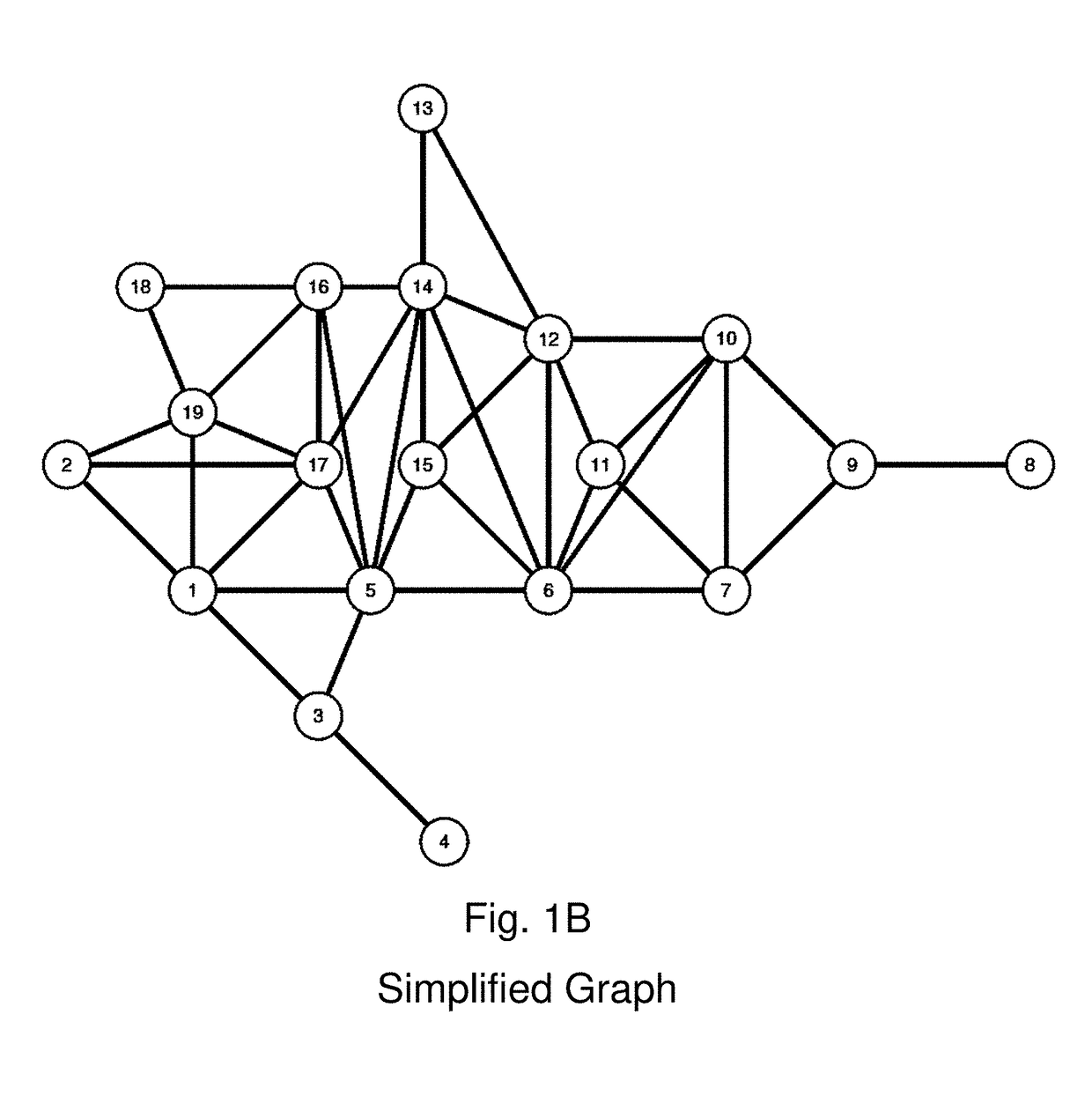Neutral radistricting using a multi-level weighted graph partitioning algorithm
a graph partitioning and multi-level weighting technology, applied in the field of map analysis, can solve the problems of reducing their overall power, and achieve the effect of improving efficiency and no indication of bias
- Summary
- Abstract
- Description
- Claims
- Application Information
AI Technical Summary
Benefits of technology
Problems solved by technology
Method used
Image
Examples
an example
[0112]Consider a simple application of the method of drawing legislative districts to a set of nineteen contiguous geographic units represented in FIG. 1A. The goal is to partition this map into a plan with two contiguous districts in which the population of both districts is balanced. The set of geographic units represented in FIG. 1A is globally contiguous—that is, every unit in the map could potentially be included in a contiguous district with any other unit in the map. The algorithm proceeds by, first simplifying the map into a connected graph with nineteen vertices and thirty-nine edges; second, collecting vertices into an even simpler graph; third, partitioning the simpler graph; and finally, refining the graph to ensure that the resulting districts have balanced (equal) populations. In this example, the result of this process is a single “partition” of the map into a set of two districts with equal populations.
[0113]First, the algorithm begins by simplifying the map into a c...
PUM
 Login to View More
Login to View More Abstract
Description
Claims
Application Information
 Login to View More
Login to View More - R&D
- Intellectual Property
- Life Sciences
- Materials
- Tech Scout
- Unparalleled Data Quality
- Higher Quality Content
- 60% Fewer Hallucinations
Browse by: Latest US Patents, China's latest patents, Technical Efficacy Thesaurus, Application Domain, Technology Topic, Popular Technical Reports.
© 2025 PatSnap. All rights reserved.Legal|Privacy policy|Modern Slavery Act Transparency Statement|Sitemap|About US| Contact US: help@patsnap.com



